Related Research Articles

Cloyne is a village located to the southeast of Midleton in eastern County Cork, Ireland. It is also a see city of the Anglican Diocese of Cork, Cloyne and Ross, while also giving its name to a Roman Catholic diocese. The village is in a civil parish of the same name. St Colman's Cathedral in Cloyne is a cathedral church of the Church of Ireland while the Pro Cathedral of the Roman Catholic Diocese of Cloyne, Cobh Cathedral of Saint Colman, overlooks Cork Harbour. Cloyne is within the Cork East Dáil constituency.
The Bishop of Cork, Cloyne and Ross is the Church of Ireland Ordinary of the united Diocese of Cork, Cloyne and Ross in the Province of Dublin.
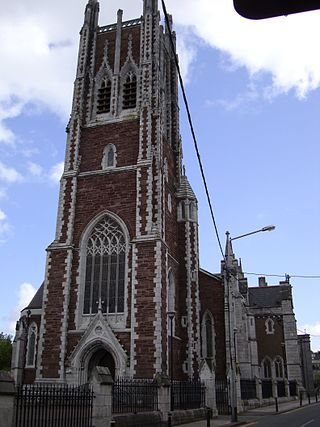
The Diocese of Cork and Ross is a Latin diocese of the Catholic Church in Ireland, one of six suffragan dioceses in the ecclesiastical province of Cashel and Emly.
The Bishop of Connor is an episcopal title which takes its name after the village of Connor in County Antrim, Northern Ireland. The title is currently used by the Church of Ireland, but in the Roman Catholic Church it has been united with another bishopric.
Events from the year 1747 in Ireland.
The Bishop of Cloyne is an episcopal title that takes its name after the small town of Cloyne in County Cork, Republic of Ireland. In the Roman Catholic Church, it is a separate title; but, in the Church of Ireland, it has been united with other bishoprics.
The Bishop of Down and Connor is an episcopal title which takes its name from the town of Downpatrick and the village of Connor in Northern Ireland. The title is still used by the Catholic Church for the diocese of that name, but in the Church of Ireland it has been modified into other bishoprics.
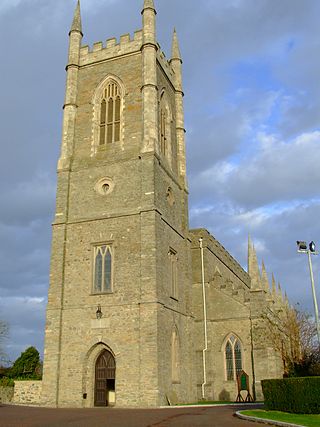
The Bishop of Down was an episcopal title which took its name from the town of Downpatrick in Northern Ireland. The bishop's seat (Cathedra) was located on the site of present cathedral church of the Holy and Undivided Trinity in the Church of Ireland.

The Bishop of Limerick is an episcopal title which takes its name after the city of Limerick in the Province of Munster, Ireland. In the Catholic Church it still continues as a separate title, but in the Church of Ireland it has been united with other bishoprics.
The Bishop of Cork and Cloyne was an episcopal title which took its name after the city of Cork and the town of Cloyne in southern Ireland.
The Diocese of Ross was a separate diocese situated in south-west Ireland. Following the Reformation, there were two dioceses. In the Church of Ireland, the diocese is now part of the Diocese of Cork, Cloyne and Ross. In the Roman Catholic Church, it is part of the Diocese of Cork and Ross. In the 19th century, an exclave of the diocese existed around that part of the Beara peninsula in County Cork including the area around Glengariff though not as far east as Bantry. The main diocesan territory was centred on the towns of Baltimore, Skibbereen, Rosscarbery and Clonakilty which lie along the modern national road N71.
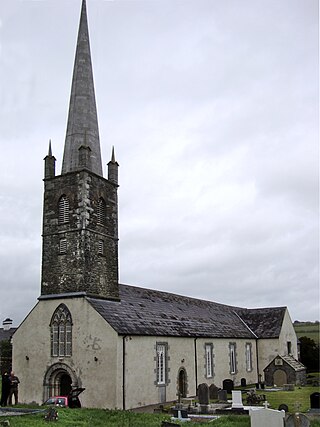
The Bishop of Ross was a separate episcopal title which took its name after the town of Rosscarbery in County Cork, Ireland. The title is now united with other bishoprics. In the Church of Ireland it is held by the Bishop of Cork, Cloyne and Ross, and in the Roman Catholic Church it is held by the Bishop of Cork and Ross.
The Bishop of Cork and Ross is an episcopal title which takes its name after the city of Cork and the County Cork town of Rosscarbery in the Republic of Ireland. The combined title was first used by the Church of Ireland from 1638 to 1660 and again from 1679 to 1835. At present the title is being used by the Roman Catholic Church.
The Bishop of Cork was a separate episcopal title which took its name after the city of Cork in Ireland. The title is now united with other bishoprics. In the Church of Ireland it is held by the Bishop of Cork, Cloyne and Ross, and in the Roman Catholic Church it is held by the Bishop of Cork and Ross.
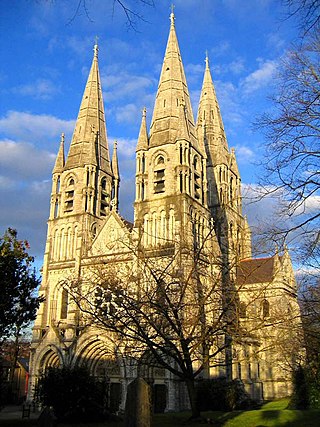
The Diocese of Cork, Cloyne and Ross, also referred to as the United Diocese of Cork, Cloyne and Ross, is a diocese in the Church of Ireland. The diocese is in the ecclesiastical province of Dublin. It is the see of the Bishop of Cork, Cloyne and Ross, the result of a combination of the bishoprics of Cork and Cloyne and Ross in 1583, the separation of Cork and Ross and Cloyne in 1660, and the re-combination of Cork and Ross and Cloyne in 1835.
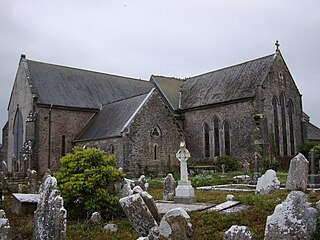
St. Colman's Cathedral, Cloyne is a cathedral of the Church of Ireland in Cloyne, County Cork in Ireland. It is in the ecclesiastical province of Dublin. Originally a Roman Catholic cathedral, it was converted to an Anglican cathedral in 1678.
William Lyon was the English-born bishop of Cork, Cloyne, and Ross.
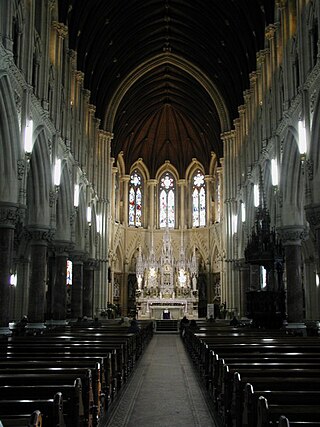
The Diocese of Cloyne is a Latin diocese of the Catholic Church in Ireland. It is one of six suffragan dioceses in the ecclesiastical province of Cashel.
Bishop William Coppinger (1753–1830) was an Irish Catholic priest, who served as Bishop of Cloyne and Ross, from 1791 until his death.
References
- ↑ Diocese of Cork
- ↑ Fryde, E. B.; Greenway, D. E.; Porter, S.; Roy, I. (1986). Handbook of British Chronology (Third ed.). Cambridge: Cambridge University Press. p. 344. ISBN 0-521-56350-X.